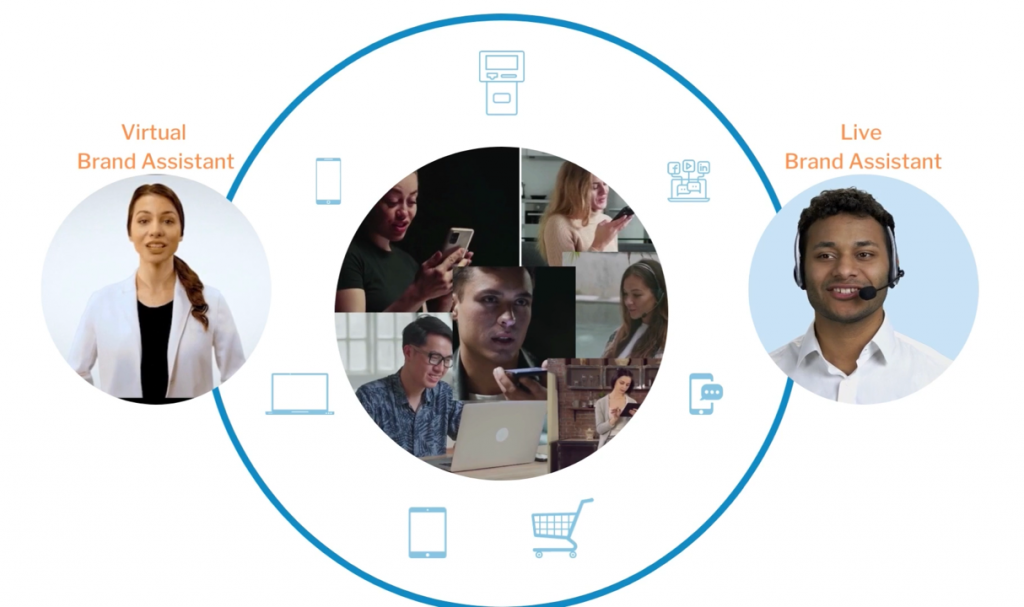How we engage with consumers is changing rapidly. In the past two years alone, brands have had to adapt to new strategies for creating compelling and effective consumer experiences.
Vocinity offers a unique solution: conversational video brand assistants. We caught up with the company’s CEO Michael Riemer to learn more about how the technology works, where brands are finding value, the future of conversational marketing, and more.
“The time has come for more engaging and informative consumer experiences,” said Riemer. “Whether on the phone, on the web, or in stores, Vocinity personal shopping and service assistants answer questions, share information, and automate key processes — when, where and how consumers demand it.”
ForceBrands: What is Vocinity? What pain points does it solve?
Michael Riemer: Vocinity provides a SaaS video engagement platform featuring video and voice-based virtual and live brand assistants. We enable powerful brand and product experiences when, where, and how your consumers want them.
With Vocinity, you tackle the cost, coverage, and consistency challenges of finding and retaining quality staff for online and in-store sales and support activities — enabling consistent, memorable, personalized experiences across all customer touchpoints.

FB: How are today’s brands/industries levering the platform to engage with consumers?
MR: Brands and retailers use our video and voice engagement platform to support a broad range of use cases, from appointment setting and assisted selling, to customer service and collections.
So, even when you cannot be there in person, Vocinity enables consumers to engage in interactive experiences that cultivate one-on-one relationships with a personal touch.
FB: What sets Vocinity apart from other similar services?
MR: Vocinity is the only omnichannel video and voice solution to support phone, web, and in-store (QR Code and Smart Kiosks) experiences featuring fully conversational and completely custom personal shopping and service assistants. In addition, Vocinity seamlessly supports voice and video calls (inbound, outbound, and transfers from conversational assistants) with sales or customer service reps when needed. At the same time, with no software for consumers to download, virtual assistants share documents, images, videos, and actionable offers based on consumer interactions.
FB: Who are some of the clients currently using Vocinity? Where are they seeing the most success?
MR: We work with leading brands and retailers who want to drive conversion rates and high average order value. Our customers range from consumer electronics to luxury brands who want to ensure 100 percent availability and personalized customer experiences without further impacting existing resources. Our customers are also capturing zero-party data about consumer shopping habits that they have very limited visibility on today.
FB: What immediate value does Vocinity add to today’s consumer brands that are either in retail, strictly e-commerce/DTC, or omnichannel?
MR: Online, in stores, and on the phone, we consistently demonstrate significant ROI by reducing or eliminating additional staffing needs without impacting customer service quality. We also enable more engaging and entertaining experiences that result in higher conversion rates, average order value, and faster issue resolution.
FB: What does the future of conversational marketing look like? Where do you foresee Vocinity in the next 3-5 years?
MR: As web 3.0 becomes a ubiquitous reality, autonomous shopping and service assistants will become the norm — just look at the shopping experience highlighted in the movie “Minority Report.”
The necessity of virtual assistants comes from the need to capture zero-party data, consumer demands for more entertaining experiences, and the inability to find and retain quality staff. Brands and retailers will rely on these assistants to perform critical, customer-facing, repetitive marketing, sales, and support tasks and offload to their human counterparts for higher-value activities. And like Vocinity does today, these assistants will capture and exchange data with back-office applications to assist consumers while sharing video, images, and messages with actionable offers.






